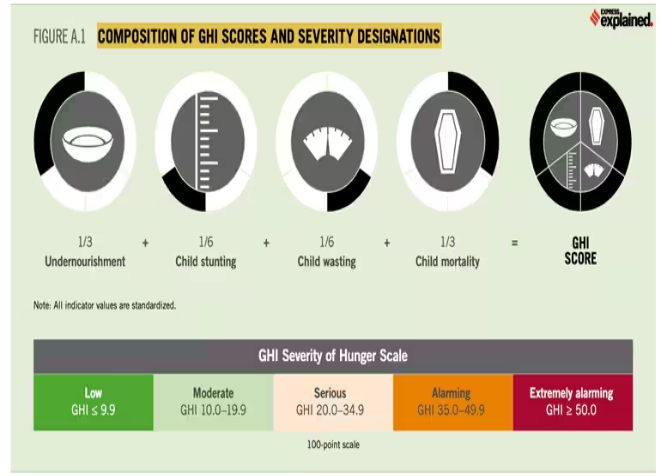![]() 13 Oct 2023
13 Oct 2023

Key Terms:
|
|---|
The Ministry of Women and Child Development not only dismissed the GHI but also questioned the intent of its authors. An official statement has described the report as part of a “consistent effort’’ to “taint India’s image”.
| Food security vs nutritional security:
Food security is defined as the availability and the access of food to all people; whereas nutrition security demands the intake of a wide range of foods which provides the essential needed nutrients. |
|---|
News Source: The Hindu
<div class="new-fform">
</div>
